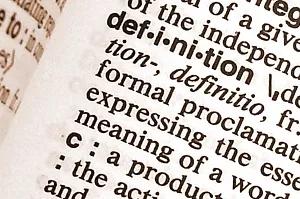What is Sales Enablement
Sales enablement is the strategic and cross-functional effort to increase the productivity of market-facing teams by providing ongoing and relevant resources throughout the buyer journey to drive business impact. It encompasses sales training, coaching, content creation, process improvement, talent development, and compensation, among other areas.
History and Evolution of Sales Enablement
While people have been doing sales enablement—or parts of it—for years under different names, sales enablement as a function and title has seen explosive growth in recent years. 'Sales enablement' may not always appear in someone's titles; other titles may include sales trainer, sales program manager, sales effectiveness manager, partner enablement, sales learning, and sales operations. No matter the title, the goal is often the same, to develop, support, and empower the sales team.
What Does Sales Enablement Do?
Sales enablement professionals may manage or work on a number of projects at any given time. Change management is also a significant focus for sales enablement professionals, who are responsible for ensuring that new initiatives and projects are rolled out smoothly. Examples of projects or initiatives within sales enablement are:
designing the sales onboarding program
selecting a sales methodology
developing a coaching program
planning and executing the SKO (sales kick-off)
evaluating and implementing tools and technologies to increase sales performance
working with marketing to create customer-facing content (presentations, deliverables, case studies, and so on) for each stage of the sales process
creating sales plays, job aids, templates, and scripts for each stage of the sales process
delivering sales training
analyzing sales data to support decision making
measuring sales team's performance
In some organizations, the duties of sales enablement are owned by sales managers. In others, the role of sales operations or product marketing may handle the responsibilities of sales enablement.

Trends Shaping Sales Enablement
There are many reasons for the growth and need for sales enablement as a function, team, and its best practices. In the ATD Press book, Success in Selling, author Reza Sisakhti outlines 12 key trends shaping the sales profession:
rise of empowered buyers
sales for verticalization
shift from FAB (Features, Advantages, Benefits) to 'Solution' to 'Insight" selling
blurring lines between sales and marketing
adoption of a hybrid sales model
on-demand availability
omnipresent social media
analytics-based prospecting
multigenerational sales teams and customer team
globalization of teams and customer base
use of 'win' analytics to gain learner insights
emergence of integrated learning environments as a necessity.
One of the most impactful is the first one listed above. With the changes in the selling landscape and prospects having more access to information than before, sellers must approach the sale in different ways. The need to better prepare sales reps, in addition to the increase of technologies to help these reps at every stage of the sale has led to an increase in sales enablement roles and the integral role they play in organizations. Because it’s an evolving discipline, experts find it difficult to agree on a common definition for sales enablement, though most agree that it spans sales strategy, sales training, coaching, content creation, process improvement, sales career development, sales effectiveness, and sales compensation, among other areas. An effective strategy includes closely aligning sales efforts to those of sales and marketing teams, human resources, finance, and products. While sales enablement most commonly reports to the head of sales, the function can also report to operations, marketing, or, more rarely, human resources.
Core Components of Sales Enablement
The responsibilities of a sales enablement professional span a wide range of areas. What do all these areas have in common? They directly contribute to a sales team’s ability to meet and exceed its revenue goals. Here are some important ones to know: sales force support, sales management and leadership, sales technology, and sales content.
Sales Force Support Sales enablement professionals can help drive success within the field by defining, documenting, and providing ongoing development. They can do so with a focus on strengthening and maximizing core selling behaviors such as acquiring new accounts, expanding existing business, and developing solutions according to the needs of the customer. These efforts enhance the sellers’ knowledge, skills, and processes to drive more closed deals.
Sales Management and Leadership Sales enablement acts as a partner to sales leaders by creating an integrated strategy to ensure accurate forecasting, effective coaching, and management activities that make an impact on their sales teams. By working closely with managers, sales enablement can effectively deploy tools and resources in the right way at the right time to shorten sales cycles and increase win rates.
Sales Enablement Technology There is an increasing amount of technology available to assist sales teams with closing more deals. Common functions of these technologies include learning management, forecasting, content management, coaching tools, sales intelligence tools, and sales process automation. Sales enablement professionals are responsible for evaluating these platforms and software to determine which tools will produce the greatest ROI.
Sales Content This includes materials and decks that the sales teams use to prepare for and utilize during interactions with the prospect. Sales content includes slide decks, sell sheets, whitepapers, and battle cards. Sometimes, the marketing team creates these or works with sales enablement to create them for the sales teams.
Competencies for Sales Enablement Professionals
Sales enablement professionals need a wide range of skills and competencies to excel. ATD has created the World-Class Sales Competency model, based on research from a wide range of organizations from around the world. The comprehensive model looks at three role groups, including sales force, sales management & leadership, and sales enablement. Competencies are outlined for each group. The competencies for an effective sales enablement professional include:
sales talent selection
sales talent development
sales tool & process improvement
sales incentive & compensation design
sales coaching
In the research done for the World-Class Sales Competency model, four areas of expertise were identified as the most important by sales talent developers:
sales talent development
sales coaching
account development and retention
sales tool and process improvement
A recent research study, 2021 State of Sales Training from ATD found that 69% of organizations used a sales competency model, whether it was developed internally or by a third party. Having a sales competency model benefits sales training because “it serves as a foundation” for how an organization develops its salespeople, says Sue Downer, head of global sales readiness at Tableau, a visual analytics platform provider with more than 4,000 employees. “From a brand-new college hire with zero sales experience who needs to build foundational skills to someone who is managing a large-scale global account, we need to know the competencies we’re building around and how to look at them in terms of measurement and analytics,” she says. “Aligning these competencies with sales leader–ship, learning objectives, formal training, and reinforcement is critical for building and executing a successful training plan.”
The Future of Sales Enablement
Sales enablement has significantly evolved in the past decade, yet there are still many exciting possibilities on the horizon. While the full impact of new technologies, such as artificial intelligence, on the sales function is still unknown, sellers and managers will need to continue adapting and expanding their skill sets to achieve greater levels of success. As a strategic, forward-thinking partner, sales enablement will be the function to which organizations look to lead in growth areas and prepare sales teams to compete in the new landscape. If sales are the engine of the business, then it follows that sales enablement is the fuel that keeps it performing at a high level. These practitioners can and should be leveraged as invaluable problem solvers, committed to executing on the company’s strategic vision and priorities.
How ATD Can Help You With Sales Enablement
Since our founding in 1943, ATD’s focus has been helping talent development professionals succeed in their roles, applying best practices, and improving organizational outcomes. In sales enablement, ATD curates the best content from the world’s leading experts in the field, providing opportunities for sales enablement professionals to learn the latest techniques using the latest technologies. Because we look at talent development holistically, our sales enablement content and resources focus on the leadership and learning aspects of the field. For access to even more resources, including practical tools and templates, research, and insights, you’re invited to become an ATD member. For more information on Sales Enablement, visit the following:

BLOGS
Sales Enablement Topic Page
Explore sales enablement articles for all levels. Find strategies, insights, and best practices to elevate your expertise. Start here!

NEWSLETTER
Sales Enablement Newsletter
Explore the latest content about sales team management, sales tools, positioning, and more. Sign up today!

OCTOBER 28–29, 2025
ATD SELL
An event focused on sales capability and building future-ready sales teams that deliver results fast.
Register by Oct. 15 and save!

GLOSSARY TERM
Talent Development Glossary Terms
Learn about essential terms and need-to-know expressions for training and development professionals. Explore now!
Free Sales Enablement E-Book
Companies spend thousands of dollars every year training reps. This e-book examines some of the challenges associated with sales training and actionable ideas you can implement to maximize the ROI from training.
